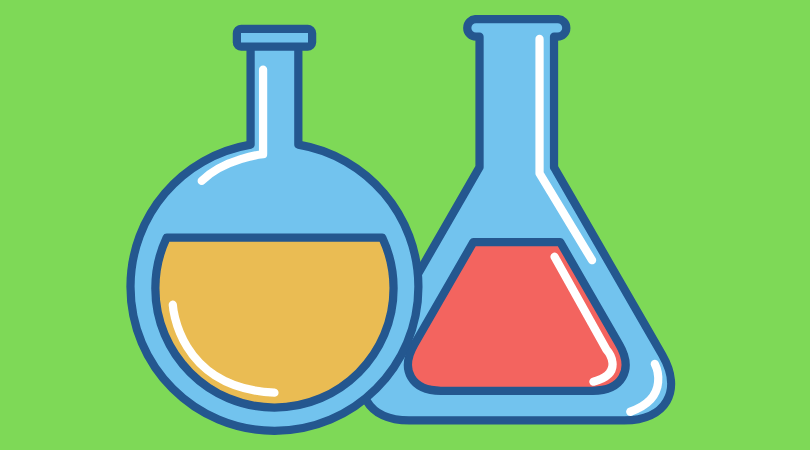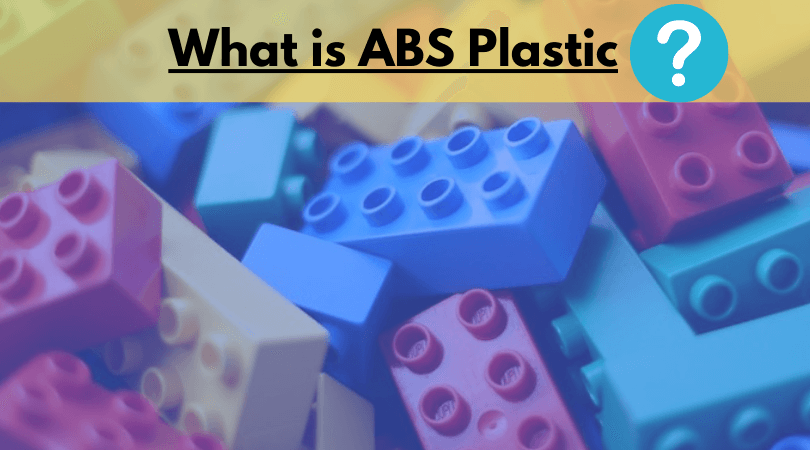Hello people. I share a lot about polymers. Today I will share a comprehensive guide on ABS plastic. Let’s get started.
What is ABS Plastic? (Acrylonitrile Butadiene Styrene)
ABS plastic, which stands for Acrylonitrile Butadiene Styrene, is a thermoplastic material utilized across multiple industries due to its remarkable properties. With its toughness, impact-resistance, and lightness, ABS plastic is easy to machine, mold, and fabricate.
Its high strength, rigidity, dimensional stability, and resistance to chemicals, heat, and abrasion make it an ideal material for various applications, such as automotive parts, toys, household appliances, pipes, and fittings.
Additionally, ABS plastic is recyclable, offering manufacturers an eco-friendly product option.
ABS comprises three monomers called Acrylonitrile, Butadiene, and Styrene.
Acrylonitrile: It is produced from propylene and ammonia. The element is responsible for the polymer’s high chemical resistance and heat stability.
Butadiene: It is released from ethylene production and steam crackers. The element is responsible for the ABS polymer’s toughness and impact strength.
Styrene: It is released when a modification is made in ethylbenzene. It contributes to the rigidity & processability of ABS plastic.
The thermoplastic became commercially available in the 1950s when the previous version was modified by adding the third monomer (Butadiene).
The addition of butadiene made it easy to process and increased its toughness significantly.
ABS is known for its rigidness, strength, and chemical resistance, with a density of approximately 1.05 grams per cubic centimeter (g/cm³). However, it is heavily affected by polar solvents.
ABS also has a high glass transition temperature of typically around 105°C to 110°C (221°F to 230°F). ABS Tg advantages include improved dimensional stability, heat resistance, and durability at higher temperatures.
How is ABS Material Made?

The most commonly used method to produce ABS is an emulsion (mixing multiple products that usually would not combine into a single product) or a continuous mass technique.
ABS’s natural color is opaque ivory and is willingly colored using different pigments depending on the application.
ABS provides excellent processability compared to other thermoplastics. It doesn’t need fancy settings and can be smoothly processed in standard machinery.
Because of its low melting temperature, Acrylonitrile Butadiene Styrene can be processed in injection molding, blow molding, extrusion molding, and especially in 3D molding.
The continuous mass technique I mentioned earlier is a patented process rarely used in particular applications. The emulsion method is widely used and is considered the best.
Key Properties of ABS
The polymer is an optimal material for a wide range of systemic applications due to its multifaceted attributes.
Below are some of its most properties, elaborated for deeper understanding:
- Superior Resistance to Impact: This material exhibits remarkable impact resistance, a quality maintained even under low-temperature conditions. This makes it highly versatile for use in environments that experience significant temperature fluctuations.
- Effective Insulating Characteristics: The polymer has commendable insulating properties, making it a reliable choice for electrical or thermal insulation applications.
- Elevated Rigidness and Durability: This material’s inherent rigidness and strength make it ideal for applications requiring structural integrity, such as drones and rockets, where weaker materials might fail under stress or load.
- Consistent Mechanical Strength and Stability: This polymer maintains a stable mechanical profile, ensuring constant reliability over time and under various conditions, further reinforcing its suitability for long-term applications.
- Exceptional Weldability: The polymer is known for its excellent weldability, making it conducive for joining parts efficiently in manufacturing and construction processes.
- Outstanding Surface Luminance: With its superior surface brightness, this material meets functional requirements and aesthetic considerations, making it a well-rounded choice for industrial and consumer-facing products.
- High Resistance to Abrasion: Its good abrasion resistance makes it a strong contender for applications where the material will be subject to frequent friction or movement, enhancing its longevity.
- Structurally Robust: The polymer’s structural sturdiness ensures it can withstand mechanical stresses. It reinforces its applicability across many systemic applications like aerospace and construction that demand a robust material.
Below are the typical properties of ABS:
Property |
Unit |
Value |
| Physical Properties | ||
| Density | g mL-1 | 1.03 – 1.14 |
| Coefficient of Thermal Expansion | cm / (cm °C) | 2.0 – 10.3 |
| Thermal Conductivity x 10-5 | W / mK | 0.17 – 0.23 |
| Heat Deflection Temperature, 0.5 MPa | °C | 88 – 107 |
| Heat Deflection Temperature, 1.8 MPa | °C | 71 – 103 |
| Rockwell Hardness, R Scale | – | R102 – R104 |
| Mechanical Properties | ||
| Compressive Strength | MPa | – |
| Flexural Modulus | MPa | 1550 – 2580 |
| Flexural Strength, Yield | MPa | 50 – 162 |
| Tensile Strength, Yield at 23 C | MPa | 28 – 120 |
| Tensile Strength, Break at 23 C | MPa | – |
| Izod Notched | J / m | 72 |
| Electrical Properties | ||
| Dielectric Strength | V/mm x 104 | 1.4 – 3.1 |
| Volume Resistivity | Ohm-cm | – |
| Dielectric Constant @ 1 MHz | – | 3.1 – 3.4 |
| Dissipation Factor @ 1 MHz | n/a, x 10-4 | 80 – 90 |
| Other Properties | ||
| Mold Shrinkage | % | 0.002 – 0.007 |
| Processing Temperature | °C | 205 – 275 |
| Continuous Service Temperature | °C | – |
| Water Absorption, 24 hr. Immersion | % | 0.26 – 1.70 |
Chemical Properties of ABS Plastic

The chemical properties of ABS is as follows:
- Strong Resistance to Alkalis and Diluted Acids: ABS plastic displays impressive resilience when exposed to alkaline substances and diluted acids. This characteristic makes it an ideal material choice for various applications where it could come into contact with such chemicals, thereby ensuring the longevity and reliability of the end product.
- Moderate Resistance to Aliphatic Hydrocarbons: ABS demonstrates a decent resistance level when interacting with aliphatic hydrocarbons. While not entirely waterproof, it offers sufficient protection for applications where exposure to these hydrocarbons is limited or controlled, ensuring the material maintains its structural integrity.
- Limited Resistance to Alcohols, Hydrocarbons, and Halogenated Hydrocarbons: It should be noted that ABS plastic shows only meager resistance when confronted with alcohols, general hydrocarbons, and halogenated hydrocarbons. This limitation makes it less suitable for applications where the material would be subjected to these substances. Careful consideration should be given to this aspect when choosing ABS for specific use cases involving these chemicals.
Why is ABS used so often?
The Acrylonitrile Butadiene Styrene (ABS) polymer has carved a niche due to its exceptional features, making it a material of choice across many applications.
Frequently found in items like computer and laptop keyboard keys, toys, Lego blocks, protective face shields, and a diverse range of automotive parts for cars and trucks, ABS is virtually omnipresent in modern life.
One of the most salient attributes of ABS is its exceptional resistance to corrosive chemicals and its durability against physical wear and tear.
This makes ABS robust and highly versatile in terms of machinability.
Traditional manufacturing processes, as well as contemporary methods like CNC machining, find ABS to be a suitable candidate due to its easy-to-machine nature.
Another noteworthy characteristic of ABS is its low melting temperature, making it well-suited for production methods such as injection molding and 3D printing.
These processes benefit from the material’s inherent thermal characteristics, allowing for efficient and cost-effective manufacturing cycles.
In terms of cost-effectiveness, ABS remains a compelling choice.
Priced approximately between $1.50 and $2.50 per pound, it offers a balanced proposition between performance and economic feasibility.
This makes it especially attractive for manufacturers requiring high-quality material without breaking the bank.
However, it is essential to exercise caution while considering ABS for applications exposed to high heat.
Due to its low melting point, the material may lose its structural integrity under elevated thermal conditions, making it less suitable for specific use cases.
Key Benefits & Limitations of ABS Plastic
| Key Benefits | Limitations |
| Low melting helps in easy usability for injection molding 3D printing. |
Meager solvent and fatigue resistance
|
| High tensile strength, corrosion resistance, and virtually smack-proof. |
Poor weathering resistance
|
| Excellent resistance to dilute acid and alkalis |
Ordinary grades burn easily and won’t extinguish on their own.
|
| Numerous applications with relatively low price |
Stress cracks are evident in the presence of some greases
|
| biocompatible and recyclable material. |
Poor resistance for solvents like ketones, esters, and aromatic
|
| Non-toxic and harmless |
Poor UV resistance without protection
|
As we compare both benefits and limitations, the positives outnumber the negatives. Certain disadvantages might become a small hurdle in production, but the overall quality and smoothness wouldn’t be affected significantly.
ABS Processing Conditions
Injection and extrusion molding are the most commonly used and most effective methods for processing ABS plastic, providing excellent dimensional stability and surface finish to the manufactured parts.
Injection Molding
Determining the necessity for drying can sometimes be a challenging task. Especially when a vented cylinder is deployed, the drying of the material becomes imperative to achieve optimal results.
When drying is required, a standard guideline is to expose the material for approximately 4 hours at a temperature of 80°C.
This duration and temperature are generally effective for ABS plastic.
Moisture presence can significantly impair the material quality, indicated by visible signs such as stripes, streaks, or bubbles on the surface.
Observing any of these signs mandates the pre-drying of the mold to ensure quality output.
Mold temperature should ideally be set within the 40-70°C range, which is conducive to achieving excellent mold characteristics.
Melt Temperature is best kept between 210-270°C to ensure material flow while maintaining structural integrity.
Injection Speed can be moderate to high, dependent upon the specific requirements of the part being produced.
Material Injection Pressure is generally advised to be within the 50 – 100 MPa range for optimal material flow and filling of the mold.
Extrusion
In extrusion processes, pre-drying the ABS is often recommended, typically for about 3 hours at temperatures ranging from 70-80°C, to ensure that the material’s moisture content is within acceptable limits.
The extrusion temperature for ABS is advised to be between 200 to 240°C, a range that allows for optimal material flow and structural stability.
Screw Design: Using a screw with an L/D (Length to Diameter) ratio of 25-30 is advisable. This ratio balances material throughput and mixing, resulting in superior part quality.
The Toxicity and Recycling of ABS
ABS plastic is a biocompatible and recyclable material with a recycling number #9. In addition, it is relatively harmless, and no signs of carcinogens in thermoplastic. To date, there hasn’t been a single incident recorded related to harm caused by ABS, meaning it’s safe for use.
Recycled ABS material is often blended with virgin material to produce parts without hurting the production quality.
However, ABS is considered not safe for medical implants.
Applications of ABS
ABS material comes with various applications in many industries supporting our day-to-day lifestyle.
- Automotive
- Electrical and Electronics Appliances
- Appliances
Automotive
ABS plastic is one of the most suitable engineering plastics for automotive applications. Its lightweight and outstanding mechanical properties make it viable for manufacturing different automobile parts.
Acrylonitrile Butadiene Styrene parts keep the overall weight of an automobile in check. As the automobile industry is rapidly developing and transitioning to lightweight vehicles, ABS plastic will always be in demand.
Most importantly, the thermoplastics’ excellent impact resistance absorbs and redistributes the energy during an impact.
Here are a few products made up of ABS
- Steering wheel covers
- Dashboard components
- Door liners handle
- Instrument panels
- Pillar trim
- Seat belt components
Electrical and Electronic Applications
ABS plastic is often chosen for indoor electrical and electrical appliances that wouldn’t come in contact with the sun. Electrical enclosures and computer keyboards are a few of the leading applications.
Appliances
ABS material is used extensively in appliances like vacuum cleaners, food processors, shavers, refrigerator liners, appliance control panels, toasters, irons, etc.
Apart from that, ABS is also used in manufacturing hard hats, helmets, and plastic toys.
The Future of ABS Plastic
From a business perspective, the versatility of ABS has enabled its usage across many sectors ranging from automotive and consumer electronics to healthcare and construction. Market reports suggest that the ABS market size is expected to see a CAGR (Compound Annual Growth Rate) of around 4.6% from 2020 to 2027, reaching a valuation of nearly $40.5 billion by the end of the forecast period.
This growth will likely be fueled by rising demands in developing economies, where rapid industrialization and urbanization are underway.
Companies also invest in research and development to create enhanced ABS variants with improved characteristics, such as higher heat resistance and bio-based alternatives, to meet changing consumer demands and regulatory requirements.
As for global acceptance, developing countries in Asia, Africa, and South America are becoming burgeoning markets for ABS.
As these economies grow, their infrastructural needs expand, and ABS is positioned well to meet these demands due to its cost-effectiveness and versatile applications.
However, geopolitical factors like trade tariffs and environmental regulations could influence the market dynamics.
A focus on reducing single-use plastics and carbon footprints might require ABS to compete fiercely with biodegradable and recycled materials.
Nonetheless, due to its unique attributes, high-performance sectors like automotive and aerospace may continue to rely on ABS for select applications.
The demand for EVs and lightweight automobiles to reduce carbon emissions and become more consumer-friendly will help ABS and other thermoplastics gain significant market share.
FAQs
Is ABS plastic good quality?
ABS is a fantastic choice for the manufacturer as it is inexpensive and has good impact and corrosion resistance properties. It is also harmless to humans as it doesn’t contain any carcinogens.
Is abs better than PVC?
It ultimately depends on the applications, both of which have pros and cons. PVC is more flexible but ABS is more robust and shock-resistant. ABS is better at handling severely cold temperatures but warps or unusually bends to direct sunlight.
Is ABS plastic safe for drinking water?
If ABS fumes are inhaled, they can harm your health; even the individual parts can also harm your health. However, using ABS products for storing water and food is unlikely to break down or leach anything into food, water, and soil.
How can you tell if plastic is ABS?
Some standard features to look after when distinguishing ABS plastics are blue edges around the yellow flame when burned, a pungent smell, a powerful acrid smell, and a stinging smell irritating your nose.
What is the difference between polycarbonate and ABS plastic?
Both ABS and polycarbonate are very commonly used thermoplastics and are known for their various applications. But, as the difference goes, polycarbonate is more flexible than ABS and has better impact resistance and tensile strength. As a result, PC products are more quality-driven than ABS, even in similar applications.
Suggested Read –
- What is the Best Glue for Plastic Parts | The Ultimate Guide
- What is TPV Material? | A Simple and Detailed Guide
- What is TPE Material? | The Definitive Guide
- 6 Best Plastic Molding Techniques | A Complete Analysis
- Antistatic vs. Static Dissipative Plastics | Which One to Choose?
- Food Grade Plastic: The Best Plastics for Food Applications
Summary
ABS plastic has proven to be a valuable material in various industries due to its excellent mechanical properties, ease of fabrication, and resistance to chemicals, heat, and abrasion. Its high impact resistance and toughness make it ideal for applications requiring durability and strength, such as automotive parts and household appliances.
Moreover, ABS plastic is recyclable, making it an eco-friendly option for manufacturers. Despite its advantages, ABS plastic has some limitations, such as its relatively low melting point and susceptibility to UV radiation.
Overall, ABS plastic remains popular for manufacturers seeking a cost-effective, durable, and versatile product material.
Kindly share your reviews in the comment box.
Quick Navigation


Is ABS considered vegan friendly? Does it contain stearate?
I think it doesn’t. I couldn’t find a definitive answer, however, the most common use of magnesium stearate is found in food products, pharma, vitamins, cosmetics, and medications.
Is this material can use in clean room class 10?
We extrude ABS regrind and pull a vacuum off the extruder barrel to pull out moisture. We get a residual waste of oil and waxy sludge from the vacuum pump. We need to know what this material is and how to dispose of it safely?
ABS is commonly used for musical instruments – especially wind instruments as it is moisture resistant, ton toxic, low thermal expansion / contraction with changes in heat and moisture (unlike wood and metals) so little effect on sound quality and it has good acoustic properties.
That’s absolutely true
great information
Thanks